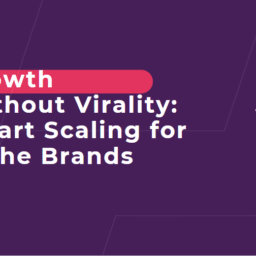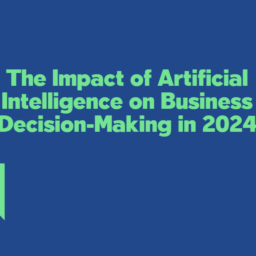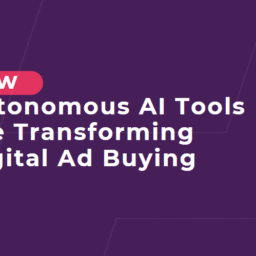The digital advertising landscape is undergoing a seismic shift. The impending demise of third-party cookies, long the backbone of targeted advertising, is forcing marketers to rethink their strategies. But amidst this challenge lies a significant opportunity: the convergence of programmatic advertising and Artificial Intelligence (AI). By leveraging the power of AI within programmatic platforms, marketers can not only navigate the cookie-less future but also achieve unprecedented levels of ROI.
The Cookie Apocalypse: A New Era for Digital Advertising
For years, third-party cookies have enabled marketers to track users across the web, build detailed profiles, and deliver highly targeted ads. However, growing privacy concerns and stricter regulations (like GDPR and CCPA) are accelerating the phase-out of these cookies. This creates a significant challenge for marketers who rely on traditional targeting methods. Without cookies, it becomes harder to:
- Identify and Reach Target Audiences: Understanding user interests and behaviors becomes more difficult.
- Personalize Ads: Delivering relevant and engaging ad experiences becomes more challenging.
- Measure Campaign Performance: Tracking conversions and attributing them to specific ad campaigns becomes less precise.
Programmatic Advertising: The Foundation for a Data-Driven Future
Programmatic advertising uses automated technology to buy and sell ad space in real-time. It allows marketers to target specific audiences, optimize campaigns based on performance data, and manage their ad spend more efficiently. While programmatic advertising has traditionally relied on cookies for targeting, it’s evolving to embrace new, privacy-centric approaches.
AI: The Secret Weapon for Cookie-less Programmatic Advertising
AI is the key to unlocking the full potential of programmatic advertising in a cookie-less world. AI algorithms can analyze vast amounts of data, identify patterns, and make predictions that enable marketers to:
- Contextual Targeting: AI can analyze the content of a webpage to understand its context and serve relevant ads, regardless of whether a user has been tracked with cookies.
- First-Party Data Utilization: AI can analyze first-party data (data collected directly from your customers) to identify valuable audience segments and personalize ads.
- Predictive Targeting: AI can use machine learning to predict which users are most likely to convert based on their behavior, demographics, and other factors.
- Lookalike Modeling: AI can create lookalike audiences based on your existing customer base, allowing you to reach new users who share similar characteristics.
- Attribution Modeling: AI can use sophisticated algorithms to attribute conversions to specific ad campaigns, even in the absence of cookies.
- Dynamic Creative Optimization (DCO): AI can automatically generate and optimize ad creatives based on user behavior and preferences, maximizing engagement and conversion rates.
How AI Maximizes ROI in a Cookie-less World
Here’s a breakdown of how AI can help you achieve a higher ROI in your programmatic advertising campaigns:
- Improved Targeting Accuracy: AI-powered targeting methods, such as contextual targeting and predictive targeting, can reach the right audience with greater precision than traditional cookie-based targeting.
- Enhanced Personalization: AI can personalize ad experiences based on user behavior and preferences, increasing engagement and conversion rates.
- Automated Optimization: AI can automatically optimize campaigns in real-time, adjusting bids, targeting parameters, and ad creatives to maximize performance.
- Reduced Waste: By targeting the most relevant users and optimizing campaigns in real-time, AI can reduce wasted ad spend.
- Better Attribution: AI-powered attribution models can provide a more accurate understanding of which campaigns are driving conversions, allowing you to allocate your budget more effectively.
Strategies for Leveraging AI in Your Programmatic Campaigns
Here are some practical strategies for incorporating AI into your programmatic advertising campaigns:
- Invest in a Robust Data Management Platform (DMP): A DMP allows you to collect, organize, and analyze your first-party data, which is essential for AI-powered targeting and personalization.
- Partner with AI-Powered Programmatic Platforms: Choose programmatic advertising platforms that offer built-in AI capabilities, such as contextual targeting, predictive targeting, and dynamic creative optimization.
- Focus on First-Party Data Collection: Implement strategies to collect more first-party data from your customers, such as email sign-ups, loyalty programs, and website tracking (with user consent, of course).
- Experiment with Different AI Targeting Methods: Test different AI-powered targeting methods, such as contextual targeting, predictive targeting, and lookalike modeling, to see what works best for your brand.
- Continuously Monitor and Optimize: Regularly monitor your campaign performance and make adjustments as needed to optimize your AI-powered advertising efforts.
The Future of Programmatic Advertising is AI-Driven
The combination of programmatic advertising and AI is revolutionizing the way marketers reach their target audiences and drive ROI. As the cookie-less future approaches, AI will become even more critical for success in the digital advertising landscape. By embracing AI-powered programmatic advertising, you can navigate the challenges ahead and unlock new opportunities for growth.
Don’t wait for the cookie to crumble completely. Start exploring AI solutions now and position your brand for success in the next era of digital advertising.




